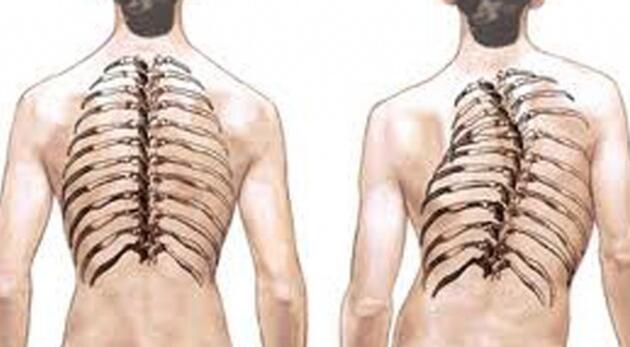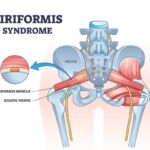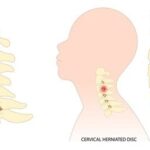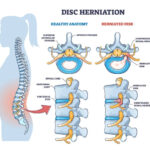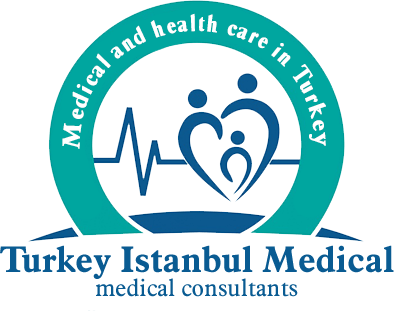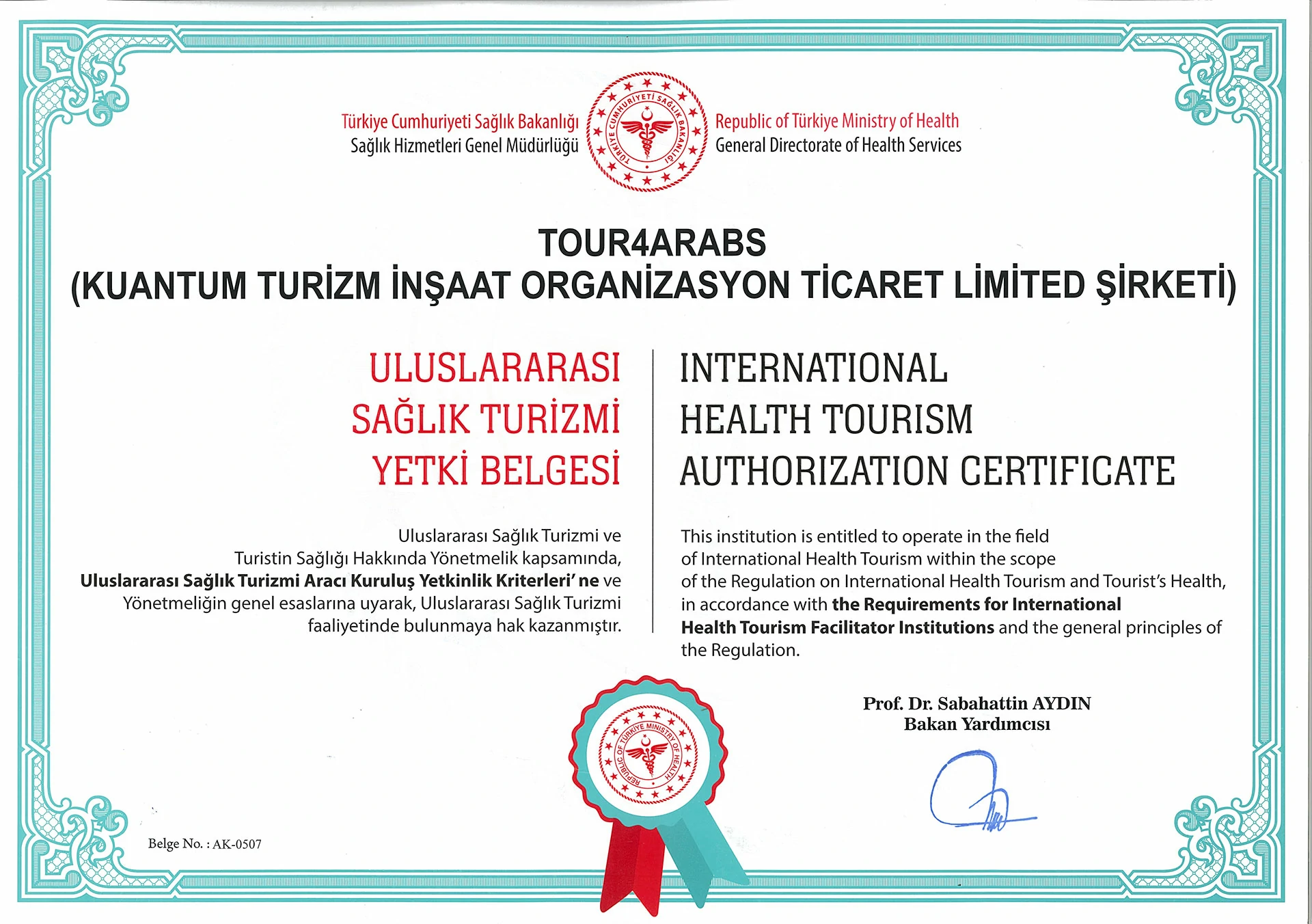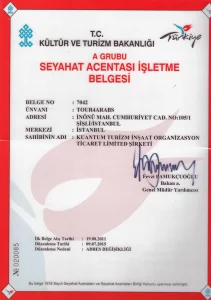What is Scoliosis (Curvature of the Spine) ?
Scoliosis ,When viewed from the side, the human spine is not completely straight. There is a slight depression in the neck and waist area (lordosis) and a slight hunchback of the back (kyphosis). When viewed from behind, it should be perfectly straight. Scoliosis (Curvature of The Spine) means that the spine is curved to the right or left side. Scoliosis is actually a finding, not a disease. Just as symptoms such as fever or pain may occur due to different diseases, various diseases can cause scoliosis. For this reason, scoliosis can be defined as a formal deformity that occurs in a healthy spine structure.
It can occur due to many diseases, as well as at different ages and in various parts of the spine structure. Scoliosis, which occurs in two different people for the same reason, does not show the same course. It has its own specific treatment methods that vary according to individuals.
Scoliosis Incidence
It is seen in approximately 2 – 4 percent of the population. Most of these are low degree curves. It can be seen about 8-10 times more frequently in girls than boys. Scoliosis progresses to a degree that requires treatment in only 10 percent of people with curvature of their spine. Regular exercise, keeping the back muscles strong, increasing the condition and getting fit are indispensable elements in almost every step of scoliosis follow-up and treatment.
What are the Types ?
Idiopathic Scoliosis (Unknown Cause)
The most common type of scoliosis; It is ‘idiopathic’ scoliosis, the cause of which cannot be fully clarified. Lateral bending in the spine can be ‘S’ or ‘C’ shaped. Apart from tilting to the side, rotation of the vertebrae around themselves is also seen in all idiopathic scoliosis, including the mildest forms. This rotation in the vertebrae causes asymmetrical protrusions on the back or waist.
Neuromuscular Scoliosis
The second most common type of scoliosis is neuromuscular scoliosis. Muscular or nerve diseases can be among the main causes of neuromuscular scoliosis. Nervous diseases can be caused by the brain and spinal cord; Muscular diseases can be seen in childhood and later. In neuromuscular scoliosis, unlike idiopathic scoliosis, respiratory distress and sensory defects are more common.
Scoliosis brace may not be used during the treatment process due to respiratory problems, communication disorders, sensory defects and epileptic seizures. Younger ages may be preferred for surgical intervention in this type of scoliosis. Fusion therapy can be applied.
Congenital Scoliosis
Congenital scoliosis is the third most common. It is a type of scoliosis due to spinal anomalies that occur during the development of the unborn child. Congenital scoliosis progresses rapidly in the first years. For this reason, the treatment process of congenital scoliosis that occurs in the early stages may require surgical intervention at a young age.
Scoliosis in Adults
Adult Idiopathic Scoliosis
Beginning painlessly in childhood; However, it is a disorder that can show its symptoms (pain, posture disorder, etc.) in advanced ages. In adult idiopathic scoliosis, severe pain may occur due to degeneration in facet joints. Respiratory functions may be affected due to excessive deformation that may occur in the chest, and patients may get tired quickly and respiratory distress may occur.
Adult Degenerative Scoliosis
Adult degenerative scoliosis is the type of scoliosis that occurs as a result of wear on the spine with aging. It usually occurs in people over the age of 50. Also, osteoporosis that occurs at these ages may be one of the causes of degenerative scoliosis in adults as well as increase in curvature. Degenerative scoliosis that occurs with wear can be seen in any of the neck, back and waist regions of the spine; However, the most common area is the waist region.
The strength and balance of the spine may be impaired in people with severe adult degenerative scoliosis. This disorder can cause the spine in the foreground and background, the trunk to lean sideways, and the trunk to lean forward as the lumbar anatomical angle decreases. These imbalances may cause an increase in the severity of the curvature and may cause pain by affecting the patient’s mobility.
In adult patients with degenerative scoliosis, back pain, low back pain and pain along the distribution area of the nerve (radiculopathy) due to nerve compression and loss of strength in the muscles supplied by the nerve may be observed.
In these deformities that may occur in the spinal structure, spondylolysis may cause the spinal bone to slide forward.
Non-surgical treatment methods are generally preferred. Physiotherapy programs, stabilization, strengthening and stretching exercises can relieve muscle spasm and reduce pain. Scoliosis may also develop in adults with rheumatic disease, osteoporosis (osteoporosis) and after trauma and infections.
Scoliosis Symptoms
- Sideways curvature of the spine
- Side and forward curvature of the spine
- One shoulder (right-left) moving forward
- Shoulders and hips are not symmetrical.
- Presence of a second curve compensating for the first curvature
- Back and / or low back pain
- Shortness of breath, tiredness
Except those :
- Neurofibromatosis
- Various rheumatic diseases
- Osteogenesis imperfecta
- Marfan syndrome
- Various connective tissue diseases such as Ehler danlos
- Spinal fractures
- Spine infections
- Various metabolic diseases such as Morquio, Gaucher disease and some genetic syndromic diseases may cause scoliosis.
What is Done at the Diagnosis Stage ?
After a detailed history is taken and examined by the physician, imaging methods are used. It is possible to make a definitive diagnosis with standing spine radiographs. Rarely, advanced radiological examinations (MR films) of the spine are also ordered to distinguish other causes. There are body topographic analysis systems that do not contain X-rays, which have been used more frequently in recent years, and allow following curvature.
Early diagnosis is the most important in scoliosis. For this reason, families should check the spine of their children between the ages of 10-16, and if there is any doubt, they should consult a physician immediately.
Patients Should Not Do
Because of scoliosis types and spine curvature, patients should avoid some activities.
Especially adults who suffer from scoliosis can have a more successful treatment process by paying attention to the points indicated.
Although regular exercise is recommended for all scoliosis patients, people should first avoid doing too heavy exercise. Exercises that strengthen the back muscles and help reduce pain also increase the mobility of people. Especially swimming, yoga and pilates are thought to be effective in the treatment of scoliosis. It is beneficial to avoid challenging sports activities such as long-distance running or horse riding that may put pressure on the spine. Especially people with scoliosis surgery should avoid multi-contact sports that can cause trauma.
These patients can prevent the increase in the curvature with some changes they will make in their daily lives. Working at a desk for a long time is one of the movements that should be avoided. However, in order not to increase waist and back pain, it is necessary not to lie face down. It is also not recommended to use a large number of pillows while sleeping.
How Is Treated?
The treatment process of scoliosis varies according to the disease causing scoliosis and the scoliosis that occurs in the person. In other words, while the treatment process continues in its natural flow for some patients; In some patients, the person’s response to treatment may vary depending on the type of scoliosis. Scoliosis progresses with growth in childhood and adolescence. That is, the curvature of the spine increases even more.
For all these reasons, there is no single and correct treatment option for scoliosis that can be applied to all situations. The age at which scoliosis is diagnosed, the location and degree of the curvature, the causes of scoliosis, the examination findings and the data obtained from the radiological examinations should be carefully examined, that is, the treatment for scoliosis should be ‘personalized’ and should be applied meticulously from patient to patient.
Although each treatment option varies according to the patient, there are generally three alternative ways after scoliosis diagnosis. The first option is follow-up and is suitable for curvatures less than 20-25 degrees and consists of follow-up periodically, increasing sporting activities and general body condition.
Non-Surgical Treatment
Surgery is the most appropriate treatment method for patients whose curvature is over 20 degrees (40 °). In surgical treatment, the spine is straightened with the help of screws and rods placed in the back and / or waist. Nowadays, advances in surgical techniques and auxiliary methods such as imaging of spinal cord functions applied during surgery (neuromonitorization) are very useful in reducing the problems that may occur in the patient during surgery and increase the success of the surgery.
Corset Treatment
It is applied to children above 25 degrees and whose growth continues. The effect of the corset is not effective in curves over 40 degrees and completing its growth.
Surgical Treatment
Surgery is the most appropriate treatment method for patients with continued growth and curvature above 40 degrees (> 40 °). Surgical treatment is performed to prevent complications and cosmetic results in these curvatures.
Congenital scoliosis treatment can be performed at younger ages and degrees. Surgical treatment is correction of the spine with the help of screws and rods placed in the back and / or waist.
How Should Exercises Be Done?
People with spinal curvature often investigate whether scoliosis can be corrected with exercise. Although there is no scientific research that back exercises are effective in scoliosis treatment, scoliosis movements are recommended by most specialist doctors. The main purpose of scoliosis exercise applications is to increase muscle strength and reduce back pain. Movements determined by specialist doctors can be performed according to the age group and the degree of scoliosis.
Age is a very important point in determining the time to exercise. Very young children may not want to exercise regularly and stop exercising in the actual developmental period. For this reason, attention should be paid when planning the exercise time of young children.
How Should Patients with Scoliosis Lie Down?
These patients are generally recommended to sleep on their back. One of the most important reasons for lying down in this way is to put an equal load on the spine.
Thus, the progression of the curvature of the spine can be prevented. Scoliosis patients can lie on their side as well as on their back. In this position, bending the legs and putting a support under the knee such as a pillow is also good for the patients. Lying face down is not recommended as it causes flattening of the back. The beds should be of medium hardness or firmness. Those who have scoliosis surgery use products such as supportive splint to protect their back areas after the operation.
How Should Patients Eat?
Patients is generally not related to nutrition. However, in order to prevent the progression of the curvature or to maintain a healthy life, it is necessary to eat a balanced diet and exercise regularly.
